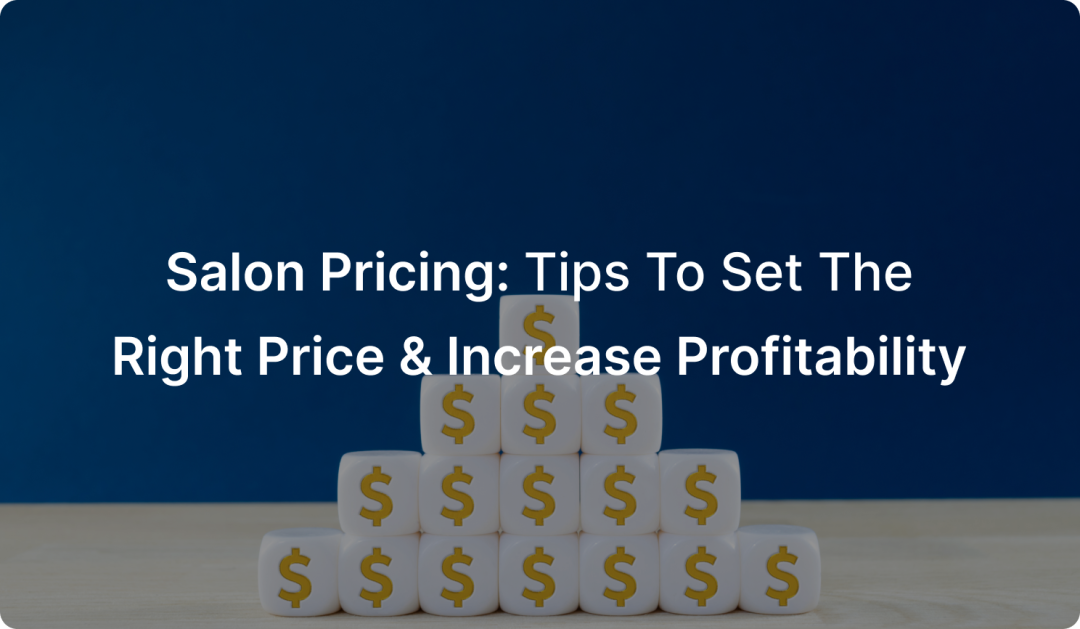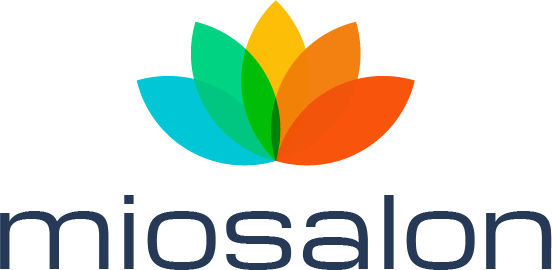Salon Pricing: Tips to Set the Right Price & Increase Profitability

Every salon owner has just one goal which is to boost sales. However, this isn’t something that happens overnight. To grow your business and become the most sought-after salon in town, you need to start with the right pricing strategy. The way your services are priced speaks a lot about your beauty business.
Whether you’re a new entrant in the beauty business or an established one, consider revamping your pricing model from time to time in order to stay afloat with current expenses. Pricing your services correctly is very important. For example, if your prices are too high, customers might consider your salon overvalued whereas if your prices are too low, the quality of your service or the skills of your employees may be questioned.
Coming up with a price list might seem like an intimidating task at first. However, once you calculate your running costs per month, determining to price isn’t as hard as it seems to be. When it comes to creating the right pricing model, don’t always look at your competitors or neighboring salons. This is mainly because their monthly costs may vary compared to yours, and there may be some other factors influencing their pricing too.
Table of Contents:
Factors that Influence a Salon Pricing Strategy
Choose a Salon Pricing Strategy
Most Popular Pricing Strategies
Factors that Influence a Salon Pricing Strategy
If you’re wondering how to set salon prices, these are a few factors you must consider:
1. Location
Location is one of the most important factors you should consider. Examine the surrounding area where your business is located. Is it in a high-end or busy area, a bustling town, or in the suburbs? Once you do a proper location study, identify the socioeconomic status of your target market. Since they are the people who are going to be visiting your salon, get an idea of their average income and purchasing power. This will also give you a better idea of the kind of clients you want to attract, and how much they are willing to pay.
2. Service Value
When you’re a newbie in the salon industry, it can be quite tempting to discount your prices. Well, offering initial discounts might seem like a good idea if you want to get the first bookings. However, remember you still need to pay bills. If you want to maximize profitability, you cannot charge less than you’re spending.
Before you create your salon pricing strategy, understand how much each service is costing in terms of time spent, products used, and employee training. The price you offer should cover these three things. Anything that you make after your break event point (BEP) on each item on your menu are your profits.
3. Demand
Once you’ve zeroed down on who your target market is, their location, and the kind of lifestyle they live, you will have to understand which salon services are the most popular amongst them. When you have a basic idea of the services that have a higher demand, you can adjust your prices accordingly.
Check social media to see what’s trending. You can even research your competitors to get useful insights into what’s popular and what’s not. This will help you price your services accordingly.
4. Competitors Pricing Plan
There are no two thoughts about the fact that the salon business is a competitive market. When you’re creating a salon pricing strategy, take a look at your competition and examine their menu too. This will definitely help you make professional price decisions. However, only take inspiration from them if their salon is on the same page as yours. For example, if you have a salon in the suburban area of a city, you cannot possibly charge like a salon that has its outlet in an upmarket area.
Another point to keep in mind is not to undercharge for any reason. Create a benchmark and stick to that. Having hair salon software ensures your clients are charged as per the prices set on your salon menu. It does not just ensure your team does not undercharge but also helps you intimate clients about changing prices.
While watching your competitor’s pricing techniques is important, don’t consider it a bible. As a salon owner, you make your pricing decisions based on the costs you are incurring every month.
5. Fixed Variable Costs
To calculate the price of every salon service, it is important for a salon owner to understand how much it costs. Every salon business has to take care of two kinds of costs – fixed and variable.
As the name implies, fixed cost includes those expenses that are fixed for a month and are mandatory. Some of the expenses that fall into this category include – rents, utilities, employee salary, marketing, maintenance, supplies, taxes, insurance, and other miscellaneous things.
Let’s assume:
A mid-range salon with 1 manager, 7 staff, and 1 cleaning staff, gets an average of 500 bills/month. The rent for the salon is Rs. 50,000 (negligible if own property), the electricity bill is around Rs. 10,000 and staff salary is an average of Rs. 30,000.
Fixed Cost | Cost(Rupees) | Total Cost(Rupees) |
Rental cost | 50,000 | 50,000 |
Electricity bill | 10,000 | 10,000 |
Staff salary | 1 Manager = 30,000 7 Staff Member = 23,000 Average 1 Cleaning Staff = 10,000 | 2,01,000 |
Miscellaneous | 5,000 | 5,000 |
Marketing | 10,000 | 10,000 |
Maintenance | 10,000 | 10,000 |
Grand Total cost | – | 2,96,000 |
Now if we sum up these expenses, let’s assume the running expense for a mid-range Salon is Rs. 2,96,000/Month.
Besides fixed costs, there are even variable costs which include all the expenses that vary every month. These costs are mandatory to run a business as well. Every service is completely dependent on these variable costs. It usually includes incentives, the number of products used, and employee working hours.
Let’s assume
Variable Incentive = 10%
Product Usage = 5%
Salon’s Profit = 20%
Fixed cost = 65% (2,96,000)
(65% Fixed cost = 100% of Revenue)
Therefore Revenue 100% = 4,55,385
As mentioned above if the salon gets 500 bills/month on average
4,55,385 / 500
The average bill value will be Rs. 911
Assume average service/Bill = 1.75 (Haircut, Shaving, Facial, hair spa, hair coloring, etc.)
Total services taken/Month = 500 * 1.75 = 850 services
According to statistics, 90% of salon bills are haircuts. (No. of bills *90/100)
|
Services taken |
No. of services |
Cost/service |
Total Cost |
| Hair Cut | 450 | 280 | 1,26,000 |
No. of haircuts * total service cost = 1,26,000
Remaining services (total no. of services – Haircuts) = 850-450=400 other services
Other services (400) are split into
|
Services taken |
No. of services |
Cost/service |
Total Cost |
| Beard shaping and Shaving | 200 | 200 | 40,000 |
| Massage Service | 100 | 400 | 40,000 |
| Hair treatment | 50 | 2000 | 1,00,000 |
| Facial | 50 | 3000 | 1,50,000 |
| Grand Total | 400 | – | 3,30,000 |
No. of other services * Service Cost = 3,30,000
Total bill value = (No. of haircuts * total service cost) + (No. of other services * Service Cost)
= 1,26,000 + 3,30,000 = 4,56,000
The total bill value should be matching the revenue value or exceed the revenue value.
Once you have the math in place, it becomes easier for you to price your salon services. Also, remember to take into consideration other factors as well.
Choose a Salon Pricing Strategy
After you decide how you’re going to charge for the service your salon offers, you can even choose a pricing strategy. You can even modify this strategy from time to time. With a salon pricing strategy in place, you will even get an idea about when you should offer discounts or when you should raise prices to maximize revenue.
Some of the most popular pricing strategies used by hair salons across the world include:
➢ Penetration Pricing
If you’re new in the salon business, this strategy will definitely help you. As the name implies, it will help you penetrate the market. In this strategy, the services are priced low so that they appeal to customers whose buying decision mainly depends on price.
With this strategy, you might be able to get clients through the door and have appointments booked. However, in the long run, it isn’t the best pricing model to follow. This is mainly because once customers get used to paying a certain amount of money for a service, they might discontinue doing business with you in case you hike your prices.
➢ Skimming Pricing
If your salon is planning to introduce new or exclusive services, you can follow this pricing structure. It involves setting higher prices for these services and moving these costs lower over time. It is a great way to attract customers with high spending power. Once you reduce your prices, you will even be able to attract a price-sensitive target group.
Once the novelty of the service wears off, you can decrease the prices. For example, if particular hair color is trending, charge a premium for it. When the craze for the trends subsides, get it back to its original price.
➢ Value-based Pricing
Value-based pricing is a more customer-centric approach to determining your pricing structure. It usually involves a customer’s willingness to pay for a service. To adopt this strategy, you will have to take into account every customer’s preference and whether they’re willing to spend ‘x’ amount on a service.
For this model to succeed, you really need to understand your clients well. Therefore, this model is only recommended for established salons.
➢ Image Pricing
The last pricing model is called image pricing or prestige pricing. If you think your salon is a prestigious brand or if you have recruited top hairstylists, this model might work for you. A lot of salons that established a strong brand image use this kind of pricing. This pricing strategy will also help you attract high-spending clients.
Salon pricing might seem daunting initially. But once you have understood your running costs, clients, and pricing structure, you will be well on your way to making profits. When done correctly, a pricing model can be extremely rewarding. If you want to attract more customers to your salon, keep the cost of your haircut and beard services low. When they come into avail of these services, you can even upsell other services to further boost profits.
If you’re looking for a one-stop solution to manage salon pricing and update prices periodically, consider getting MioSalon, salon software. It helps customers schedule appointments, check your salon menu, and helps you engage with them better.




